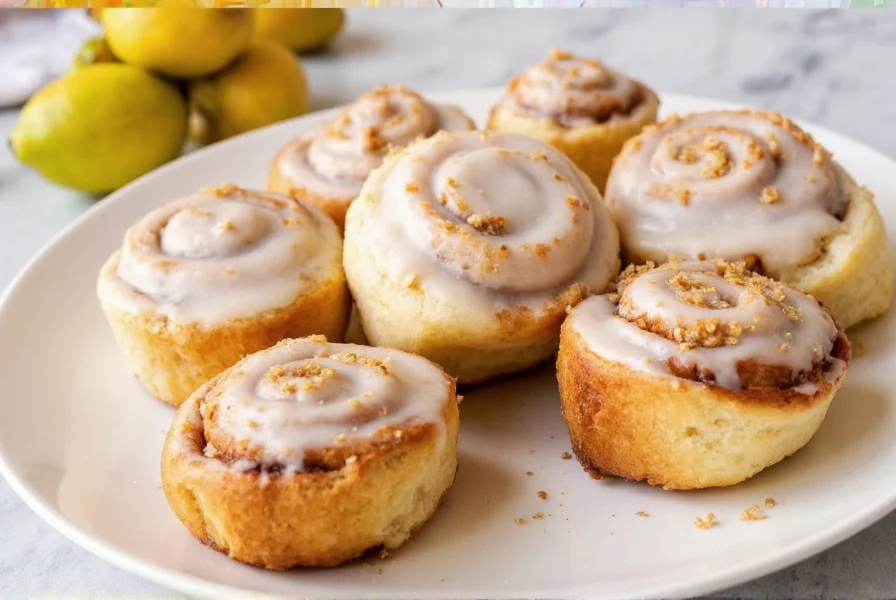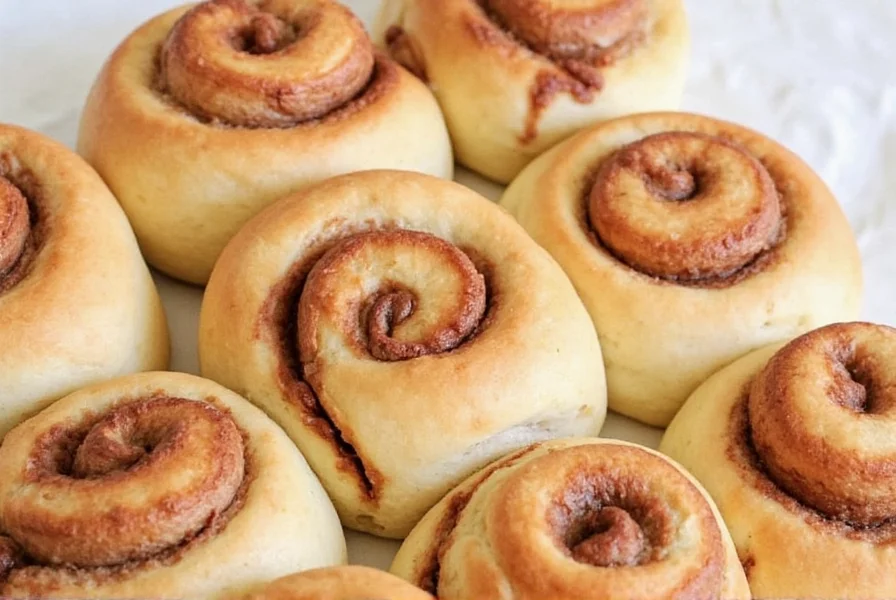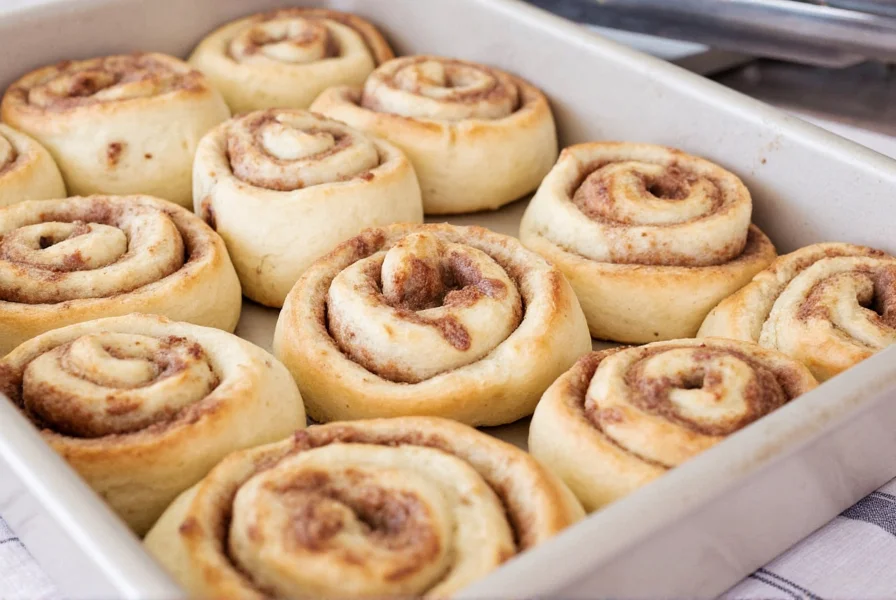Gluten-free cinnamon rolls present a unique baking challenge that many home cooks struggle with. Unlike traditional wheat-based versions, GF cinnamon rolls require careful ingredient selection and technique adjustments to achieve that perfect balance of tender dough and gooey filling. This guide provides science-backed methods to create bakery-quality gluten-free cinnamon rolls at home, addressing common pitfalls and offering solutions for consistently delicious results.
The Science Behind Successful Gluten-Free Cinnamon Rolls
Understanding why standard cinnamon roll recipes fail when converted to gluten-free is crucial. Gluten provides elasticity and structure that gluten-free flours lack. The ideal gluten-free flour blend for cinnamon rolls typically combines:
| Flour Component | Percentage | Function |
|---|---|---|
| Rice flour (white or brown) | 40-50% | Provides structure and neutral flavor |
| Tapioca starch | 25-30% | Adds chewiness and elasticity |
| Potato starch | 20-25% | Creates tenderness and moisture retention |
| Xanthan gum | 1-2% | Replaces gluten's binding properties |
Commercial gluten-free all-purpose flour blends often work well, but check labels for added xanthan gum. If absent, include 1 teaspoon per cup of flour blend. The starch components help replicate the Maillard reaction that gives traditional cinnamon rolls their characteristic golden-brown color and complex flavor.

Essential Ingredients for Perfect GF Cinnamon Rolls
Creating soft gluten-free cinnamon buns requires attention to each component:
Dough Components
- Warm liquid (105-110°F): Activates yeast without killing it. Dairy-free milk alternatives work well.
- Instant yeast: More reliable than active dry for GF doughs. Use 25% more than wheat recipes.
- Eggs or flax eggs: Provide structure and richness. Room temperature prevents dough cooling.
- Butter or dairy-free alternative: Solid fats create distinct layers when rolled.
- Sugar: Feeds yeast and contributes to browning. Brown sugar adds moisture.
Filling Secrets
The gluten-free cinnamon roll filling needs special consideration:
- Use softened butter (not melted) to prevent soaking into dough
- Mix cinnamon with sugar and a pinch of xanthan gum to prevent separation
- Add 1 tablespoon cornstarch to filling for better adhesion
- Include a small amount of instant espresso powder to deepen flavor
Step-by-Step Recipe for Flawless GF Cinnamon Rolls
This easy gluten-free cinnamon roll recipe yields 12 perfect rolls:
Ingredients
- 1 ½ cups warm dairy-free milk (105-110°F)
- 2 ¼ tsp instant yeast
- ⅓ cup granulated sugar
- 2 large eggs, room temperature
- ⅓ cup melted coconut oil
- 4 cups gluten-free all-purpose flour blend (with xanthan gum)
- 1 tsp xanthan gum (if not in flour blend)
- 1 tsp salt
Filling
- ½ cup softened butter or dairy-free alternative
- 1 cup packed brown sugar
- 3 tbsp cinnamon
- 1 tbsp cornstarch
- 1 tsp vanilla extract
Instructions
- Activate yeast: Whisk warm milk, 1 tbsp sugar, and yeast. Wait 5-10 minutes until foamy.
- Mix wet ingredients: Add eggs, coconut oil, and remaining sugar to yeast mixture.
- Combine dry ingredients: Whisk flour, xanthan gum, and salt in separate bowl.
- Form dough: Gradually add dry ingredients to wet, mixing until shaggy dough forms.
- Rest dough: Cover and let rest 20 minutes (critical for starch hydration).
- Roll out: On lightly floured surface, roll dough into 16x12 inch rectangle.
- Add filling: Spread softened butter, then cinnamon-sugar mixture evenly.
- Roll and cut: Roll tightly, pinch seam, and cut into 12 equal pieces.
- Proof: Place in greased pan, cover, and let rise 45-60 minutes until puffy.
- Bake: 350°F for 22-25 minutes until golden brown.
Troubleshooting Common GF Cinnamon Roll Problems
Understanding gluten-free cinnamon roll troubleshooting saves wasted ingredients:
Dense or Gummy Rolls
Why are my gluten-free cinnamon rolls dense? Common causes:
- Overmixing after adding flour (mix just until combined)
- Insufficient resting time before rolling (starch needs hydration time)
- Oven temperature too low (use an oven thermometer)
- Underbaked (check internal temperature: 190°F is ideal)
Crumbly Dough
If your dough falls apart when rolling:
- Add 1-2 tbsp additional liquid (milk or water)
- Ensure proper xanthan gum ratio (1-2% of flour weight)
- Chill dough 15 minutes before rolling for better handling
Filling Leakage
Prevent gluten-free cinnamon roll filling from leaking:
- Leave ½ inch border at top when spreading filling
- Seal the edge with a dab of water before rolling
- Use cornstarch in filling (as in recipe above)
- Avoid overfilling (⅓ cup filling is sufficient)

Storage and Reheating for Maximum Freshness
GF baked goods stale faster due to different starch properties. For best results:
- Store cooled rolls airtight at room temperature for 2 days
- Refrigerate up to 5 days (though texture suffers)
- Freeze unbaked rolls for up to 3 months
- Reheat properly: 10-15 seconds in microwave followed by 2 minutes in 350°F oven
Variations for Dietary Needs
Create dairy-free gluten-free cinnamon rolls with these substitutions:
- Milk: Unsweetened almond, oat, or coconut milk
- Butter: Refined coconut oil or vegan butter sticks
- Cream cheese icing: Use vegan cream cheese and powdered sugar
For egg-free versions, substitute each egg with:
- 1 tbsp ground flaxseed + 3 tbsp water (let sit 5 minutes)
- ¼ cup unsweetened applesauce
- Commercial egg replacer (follow package directions)
Frequently Asked Questions
Can I use a bread machine for gluten-free cinnamon rolls?
Yes, but with modifications. Use the dough cycle only for mixing and first rise. Remove dough before the baking cycle, shape rolls, and complete proofing and baking in the oven. Bread machines often overmix GF doughs, so monitor the consistency and stop if dough appears too wet or dry.
Why do my gluten-free cinnamon rolls collapse after baking?
Collapsing typically occurs from underbaking, excessive moisture, or improper cooling. Ensure rolls reach 190°F internally before removing from oven. Avoid opening the oven during the first 15 minutes of baking. Let rolls cool in pan for 5 minutes before transferring to wire rack—sudden temperature changes cause collapse in GF baked goods.
How can I make gluten-free cinnamon rolls without xanthan gum?
While xanthan gum significantly improves texture, you can substitute with 1 tsp psyllium husk powder per cup of flour. Chia seeds (1 tbsp ground per cup of flour) also work but may affect flavor. Expect slightly more crumbly results and handle dough more gently. Increase resting time to 30 minutes to allow alternative binders to hydrate fully.
What's the best way to reheat frozen gluten-free cinnamon rolls?
For best results, thaw frozen rolls overnight in refrigerator. Reheat directly from frozen by covering loosely with foil and baking at 325°F for 15-20 minutes. For quicker reheating, microwave for 10 seconds, then finish in 350°F oven for 3-4 minutes. This two-step method prevents the gummy texture common when microwaving GF baked goods alone.











 浙公网安备
33010002000092号
浙公网安备
33010002000092号 浙B2-20120091-4
浙B2-20120091-4